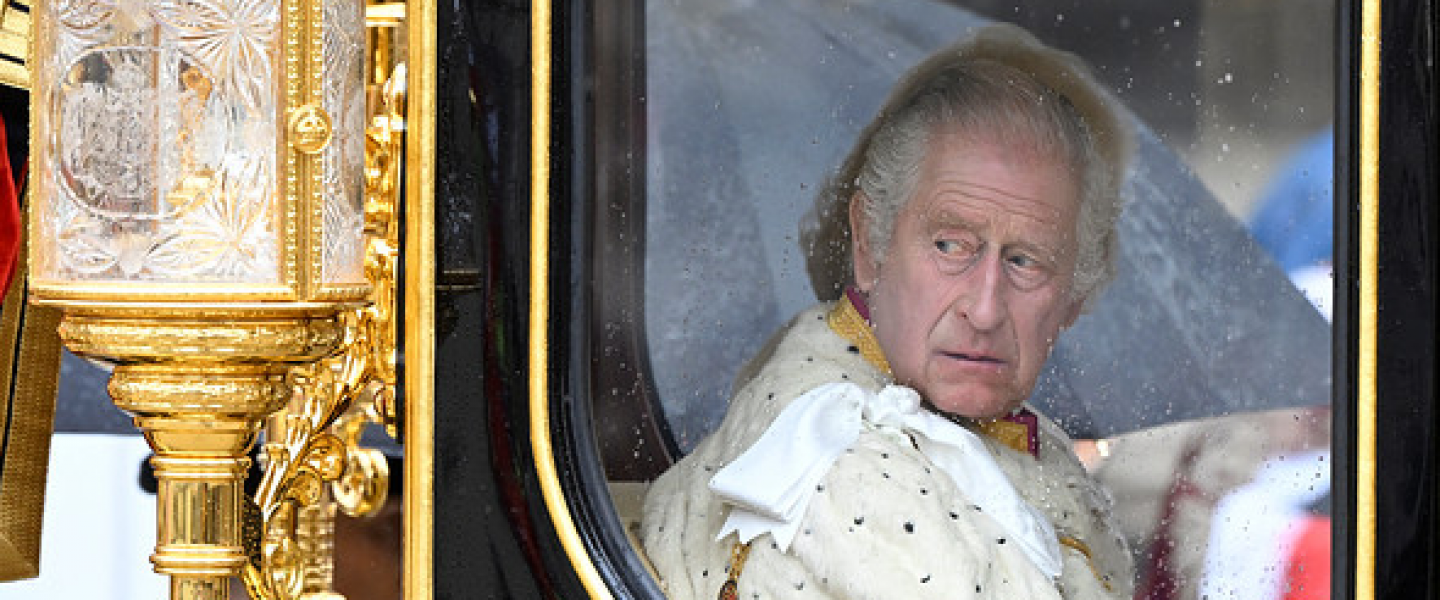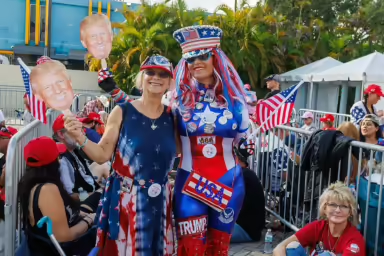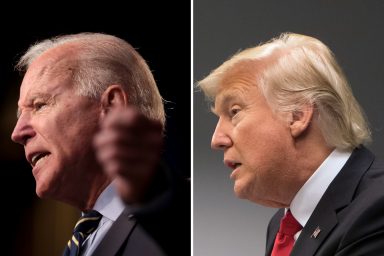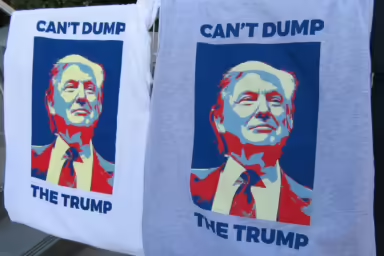Queen Elizabeth televised her coronation. King Charles didn’t tweet his, and that makes all the difference.
|
Listen To This Story
|
On May 6, King Charles III paraded through the streets of London in the Diamond Jubilee State Coach led by six white horses. It was his coronation day, one that had been decades in the making. His wife, Queen Camilla, sat next to him as the coach was met with the cheers of thousands who lined the streets. When the white horses arrived at Westminster Abbey, the King stepped out of the carriage wearing the crimson red Robes of State worn by his grandfather King George VI at his 1937 coronation.
The coronation lasted just over an hour, but included scene changes, costume changes, and the words “I come not to be served, but to serve,” spoken by the king in his first prayer. At Westminster Abbey, celebrities like Dame Emma Thompson and Katy Perry searched for seats near the Prince and Princess of Wales, Princess Anne, and Prince Harry. Music from the Ascension Choir filled the church’s walls, and viewers at home even saw the king and queen’s Holy Communion, something that had never been shown before. The Royal Palace streamed the sacred event on its YouTube channel.
Though there have been 40 coronations in Britain’s history since British royalty originated in 1066, this was the first to be online — and not just online but Very Online — which yielded such meme-worthy moments as the running commentary on Monty Python’s Holy Hand Grenade and the infinite possibilities of a note handed to the king. It was perhaps the first time the livestreaming mass chatter of the internet was applied to something so ancient and so tied to a nation’s identity: “A thousand years old for parts of it; the oath itself is attributed to Saint Dunston in 952,” said Ryan Blank, doctoral candidate in history at Emmanuel College, Cambridge.
And the Lord spake, saying, "First shalt thou take out the Holy Pin… Once the number three, being the third number, be reached, then lobbest thou thy Holy Hand Grenade of Antioch towards thy foe, who, being naughty in My sight, shall snuff it. pic.twitter.com/SmDQT7oWfB
— Wolf, guess what my username elsewhere is :-) (@wolfcat) May 6, 2023
It remains to be seen whether Charles’s reign will see him wield the technology of mass communication as well as the previous monarch. Seventy years ago, Queen Elizabeth decided to televise her coronation, and that seems to have made all the difference.
Elizabeth ascended to the throne in 1952, when she was 25. At the time, Britain was still reeling from the effects of the Blitz. In London alone, 70,000 buildings were destroyed, and another 1.7 million were damaged in six years of war. The new queen’s coronation took place on June 2, 1953, beamed into homes all over the UK. That evening, she followed up the event with another broadcast in which she explained her reasoning:
Many thousands of you came to London from all parts of the Commonwealth and Empire to join in the ceremony, but I have been conscious too of the millions of others who have shared in it by means of wireless or television in their homes. All of you, near or far, have been united in one purpose. It is hard for me to find words in which to tell you of the strength which this knowledge has given me.
In the last days of an empire the sun wouldn’t set on, the queen accessed the technology to finally reach all of it. And, what’s more remarkable, the televised coronation helped spread the technology throughout the empire, said Blank. “The queen’s coronation was the moment televisions became mainstream because people bought televisions [for the event]. Back in the year in which the queen was crowned, televisions were still fairly uncommon.”
By breaking down the barriers between the sacred moment of the coronation and the British public, Queen Elizabeth ushered in a new era that set up the royal family for a new kind of relationship: They were ostensibly rulers, but now they were also subjects — objects to be scrutinized and criticized living inside the flickering box. This relationship is best embodied in the turbulent relationship between Charles and the late Diana, Princess of Wales, who was both beneficiary and victim of the media cycle.
For years, British tabloids held a tight grip over Princess Diana, praising her as being the “savior of the House of Windsor” while also treating her as a favorite target. They continued to stalk her during and after news broke of Charles’ affair with Camila Parker Bowles in 1993, after the divorce, up to and beyond her death.
By the late ’90s, the royals had been transformed by the media, TV, and otherwise into product, entertainment. Diana was, for a time, the star.
“She was iconic, she was beautiful, she was intelligent, she was hugely charitable, she was very savvy when it came to presenting herself, and the sort of horrific nature of her breakup was something we all watched as if we had a front seat at a soap opera,” said Blank.
But the royal family and the media have developed a symbiotic relationship. The family becomes relatable, and the media gets access, as long as it keeps an appropriate distance on formal occasions. And, with the rise of the internet and social media, the royal family has only become more accessible.
Queen Elizabeth continued to embrace technological advances as they rolled out. The royals got on Twitter, Instagram, and YouTube to stay relevant and accessible to the British public. In 2019, the royal family had to set new guidelines for social media channels after racist and sexist comments directed at the wives of Prince William and Prince Harry went viral on social media, where users weighed in on the relationships between Catherine, Duchess of Cambridge, and Meghan, Duchess of Sussex.
The pageantry of Charles’s coronation exemplified the way the Royals are mediated. Monty Python memes aside, the event brought some simmering issues to the surface.
very brave choice of first song to play after you’ve been coronated pic.twitter.com/Aru07gETlo
— Scott Chegg (@buckfastbadlad) May 6, 2023
Around the city during the coronation, 52 protesters from anti-monarchy and environmental groups were arrested during a peaceful protest as they chanted “Not my king.” And some watching at home saw the coronation as distasteful given that the event cost British taxpayers an estimated $125 million — this at a time when the inflation rate is 9.8 percent and 1 in 3 adults find it difficult to pay for housing.
“Four million children living in food poverty in the UK. And we have an unelected billionaire head of state using taxpayers’ money to parade around in gold carriages, animal fur, and looted jewels,” wrote one woman on Twitter, referring to a 2019 Channel 4 News documentary about child poverty.
Moving forward, it is uncertain whether King Charles will be as tech-savvy as his mother, or whether in fact the royals can exert control over a mediascape that is much bigger than when Queen Elizabeth invited the TV cameras in. Charles’s coronation suggests that it’s likely the royal family as a media phenomenon will only become more surreal and disorienting, mixing thousand-year-old tradition with spontaneous memes.
All of which proves something that television scholars Erin Bell and Ann Gray wrote about the evolution of TV coverage of the royals: Whereas Elizabeth wanted the first moments of her rule to reach into every home in the empire, the modern era of TV, internet, and social media depicts the royal family “as part of wider British and world history, positioning the royal family as carried on a tide of wider change, rather than instigators of it, and with regular references to economic and business developments.”
As King Charles said, he came to serve, and serve he will, since the sun never sets on the internet.




